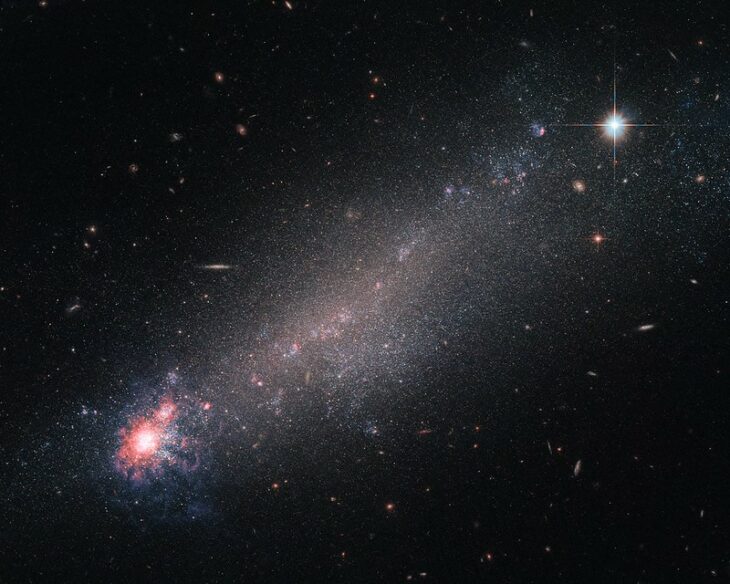Gravity is an attractive force that gets stronger the more massive something is. We don’t float off the Earth and the Earth never flies away from the Sun. Therefore, one might expect super massive objects like galaxies to only ever grow as loose materials fall onto them. But galactic growth has its limitations. Rather, galactic growth is counterbalanced by a loss of gas to intergalactic space, that is, galactic outflows.
Three processes contribute most to these galactic outflows. First, when stars form they release a new burst of radiation that pushes away the surrounding gas until it leaves the galaxy. Astronomers refer to this process using the shorthand star formation. The next process occurs when matter falls towards supermassive black holes at the center of almost every galaxy. Falling towards the black hole superheats this matter, giving some of it enough energy to escape in bright streams or jets. This phenomenon is called an active galactic nucleus or AGN. Lastly, the jets from AGNs heat bubbles of gas, increasing their buoyancy until they disperse out of their galaxies. This jet heating slows galaxy growth, as the hot bubbles prevent new material from falling onto their galaxies.

“Artist’s illustration of galaxy with jets from a supermassive black hole” by Hubble Space Telescope / ESA is licensed under CC BY 2.0.
While astronomers know these processes contribute to galactic outflows, their relative importance is uncertain. An astronomer investigated this question, intending to find which process dominates galactic outflows and whether the dominant process changed over time. To this end, he found a way to express the varied units and measurements of each process in several galaxies so that he could compare previously observed datasets directly.
In a previous study, scientists created an equation that calculates the total outflow for a galaxy from star formation and AGNs. The equation worked for any galaxy if the astronomer knew how frequently stars formed and its AGN’s brightness. Regarding how often stars form, the astronomer found that information in a literature review from 2019. AGN brightness was more complicated and relied on 2 variables: how likely a galaxy is to have an active center and how big the galaxy is to provide fuel for the jets.
The astronomer found both pieces of information on AGNs in another previous study. Then he combined all the data he had gathered to calculate the combined outflows for star formation and AGNs. To find the individual contributions from each process, he recalculated the outflow for each galaxy twice, first assuming no contributions came from the AGN and then assuming no contributions came from star formation.
To estimate the mass lost from jet heating, the astronomer carefully followed a few steps. First, he used a pattern found in an earlier paper that showed bigger jet-heated bubbles shined brighter. Once he knew how bright they shined, he calculated how much energy per second the bubbles emitted. With that information, he used a relationship found in another previous study to estimate how much material the energy from these hot glowing bubbles could push away per year.
The galaxies this astronomer analyzed were of different sizes and ages, so he could group his results by mass and point in time. He found that, in the present day, the dominant process of galactic outflows depends on the mass of the galaxy. The outflows of small galaxies are mostly due to star formation, while in large galaxies, they are mostly due to AGNs. But, this was not always the case. For massive galaxies about 10 to 11 billion years ago, all 3 processes contributed about equally.
The astronomer recognized that others could improve on his methods in future research. For example, he conceded that current measurements of AGNs and the bubbles they create may significantly underestimate their real contributions. Additionally, he omitted mass lost by the heating of other regions of galaxies besides the bubbles by their AGN jets because scientists have only found that effect happening in simulations rather than telescope observations. However, he concluded that even if his specific results are inaccurate, he has created a framework to compare the factors that shrink or impede the growth of galaxies.


